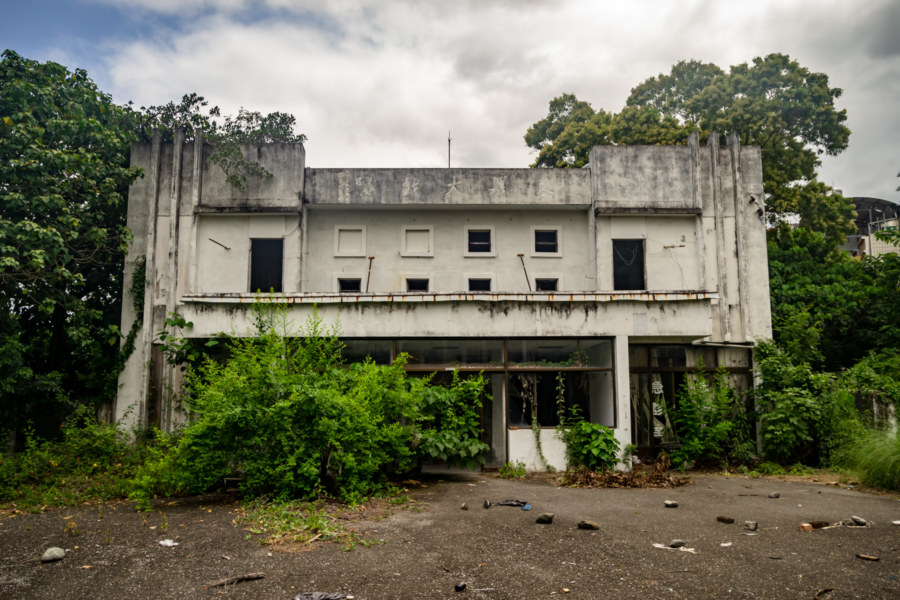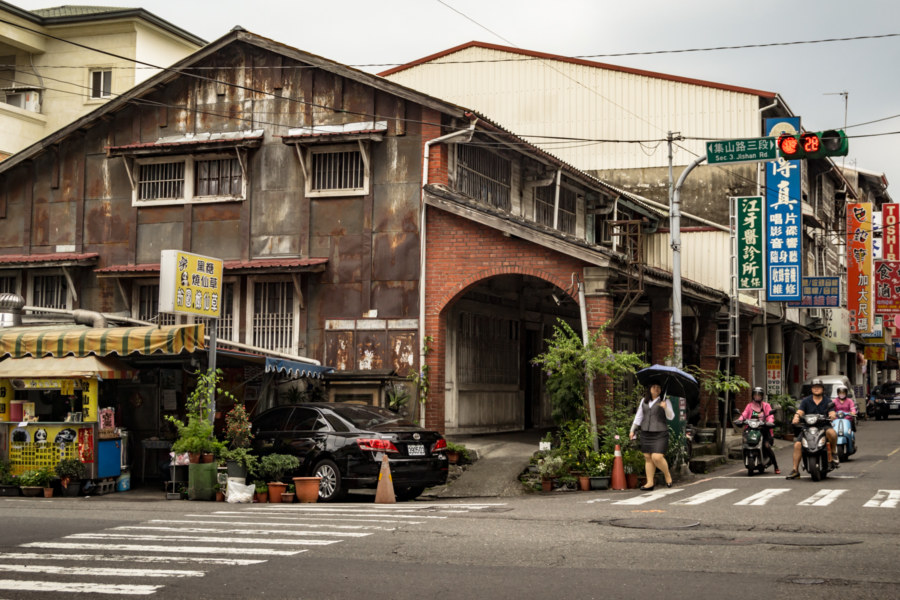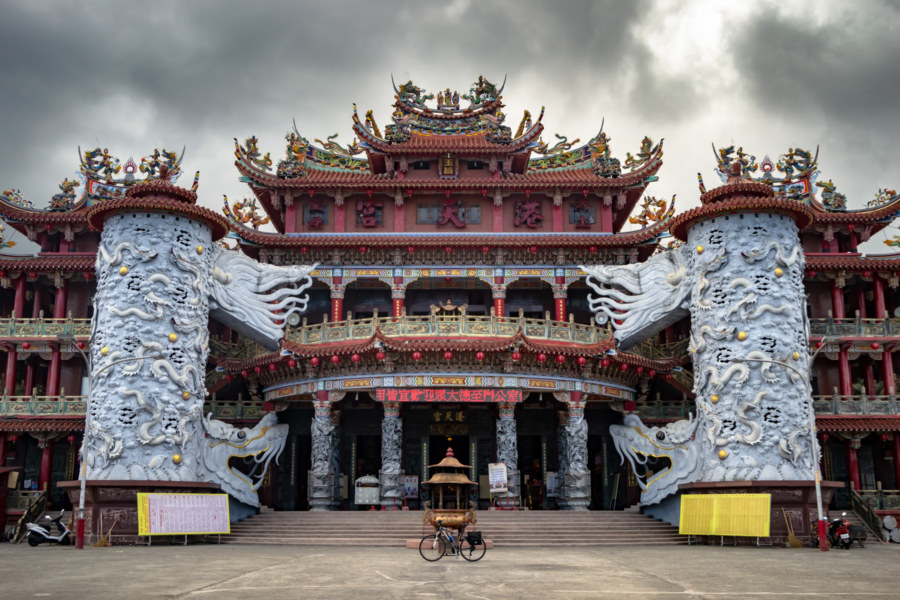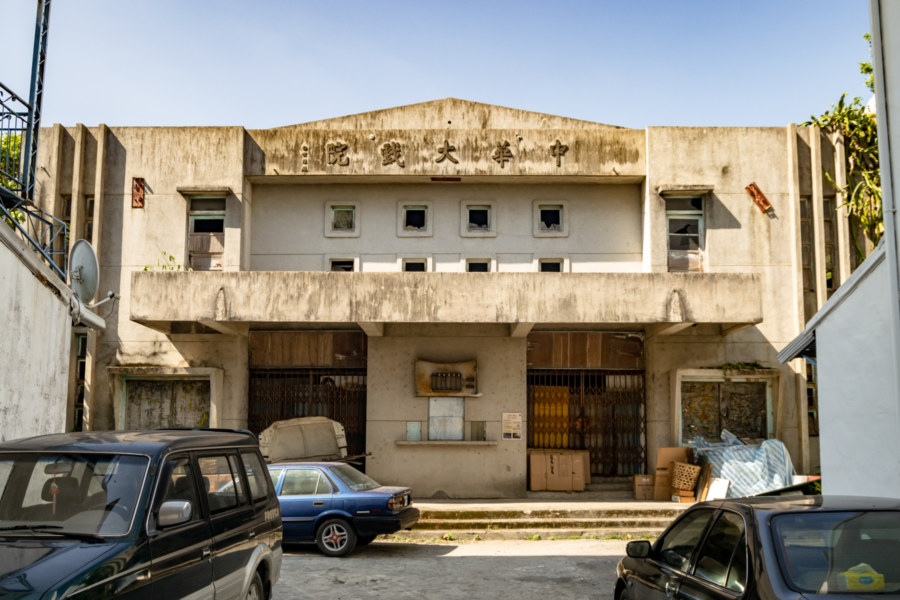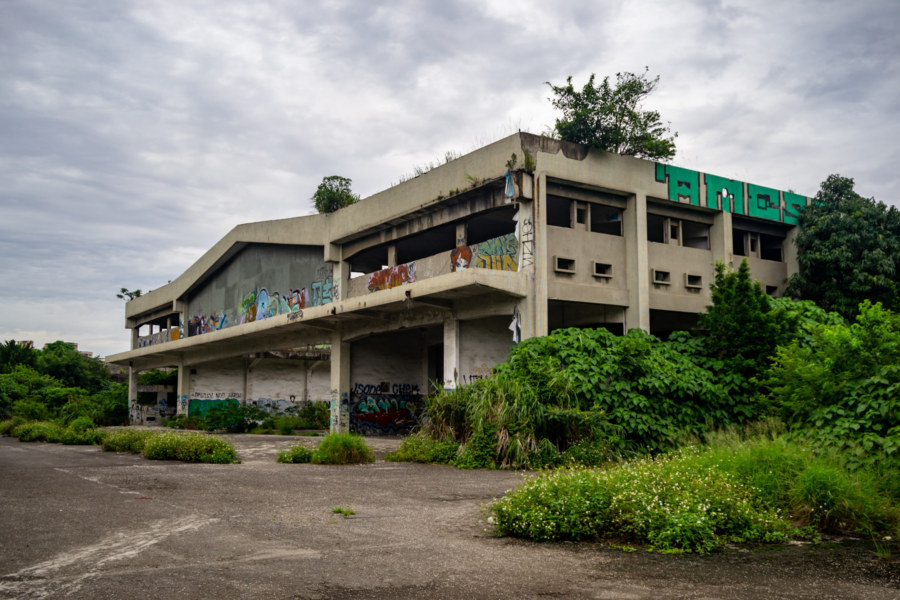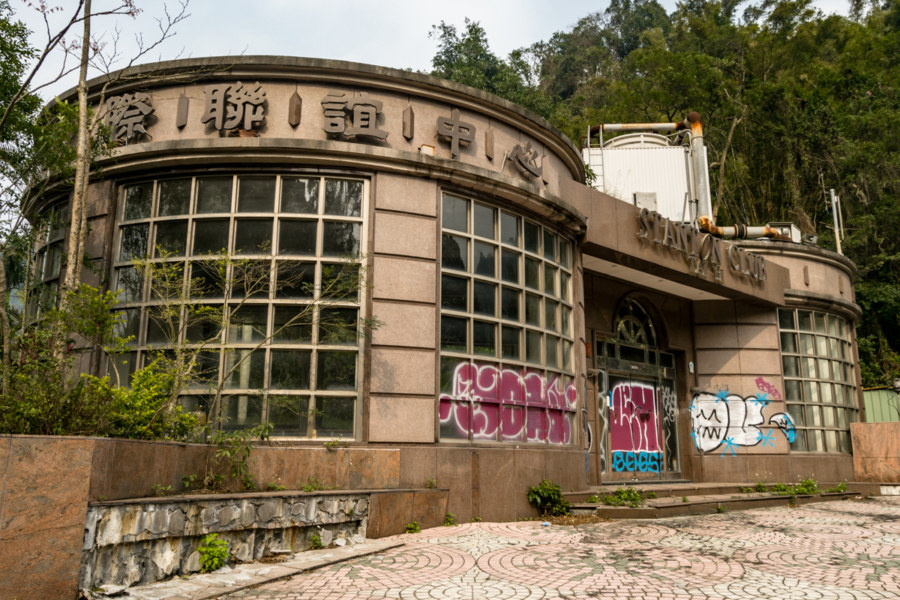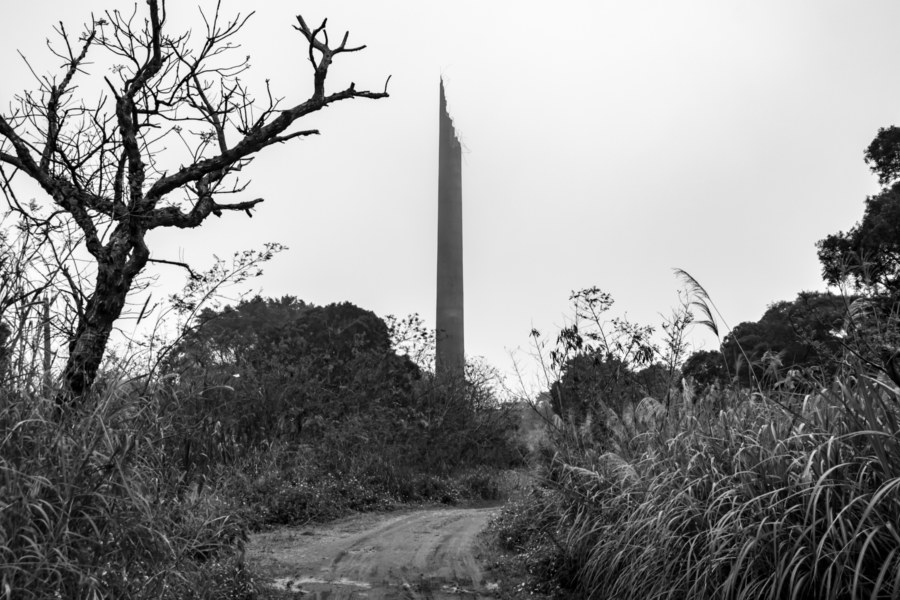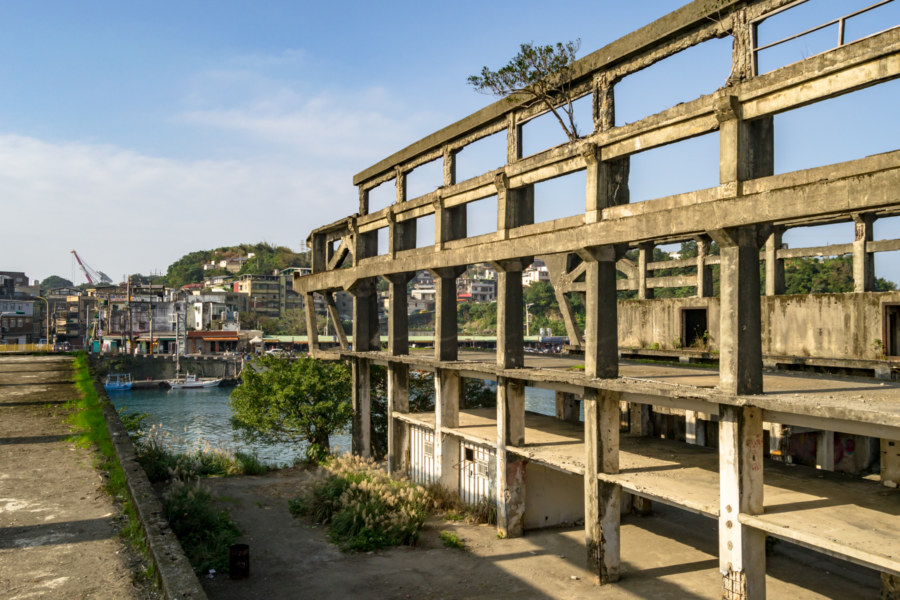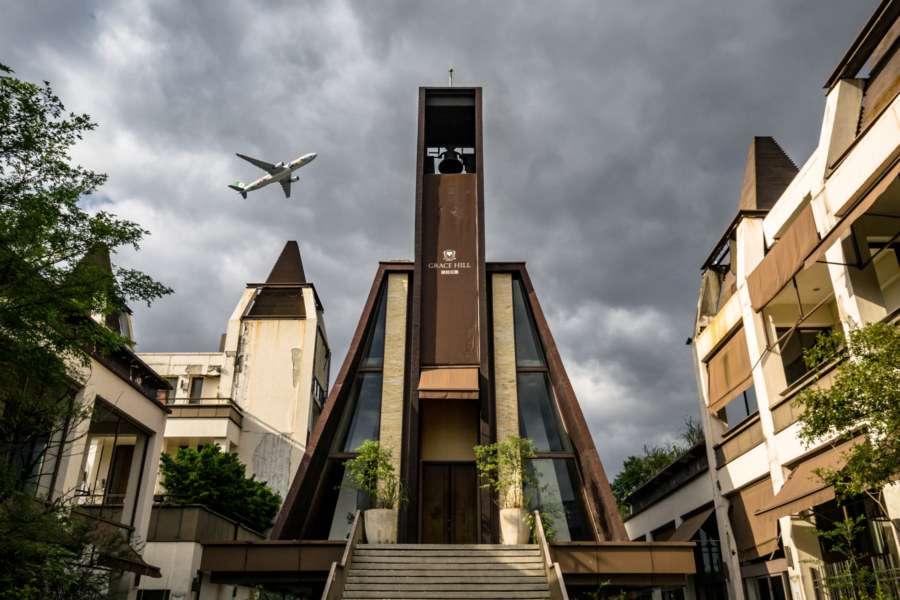Dōngxìng Theater (東興大戲院) is located in a small village in the outskirts of Taitung City, Taitung, at the southernmost extent of the Huadong Valley (花東縱谷). Not much is known about its history beyond whatever can be deduced by visiting the site, but it was almost certainly built in the late 1960s, around the same time as Jinxing Theater, located just down the street, and Zhonghua Theater in Guanshan, which has almost the same design. At some point it went out of business, probably in the 1980s, and was converted into a small rural hospital, a repurposing I’ve seen nowhere else in Taiwan.
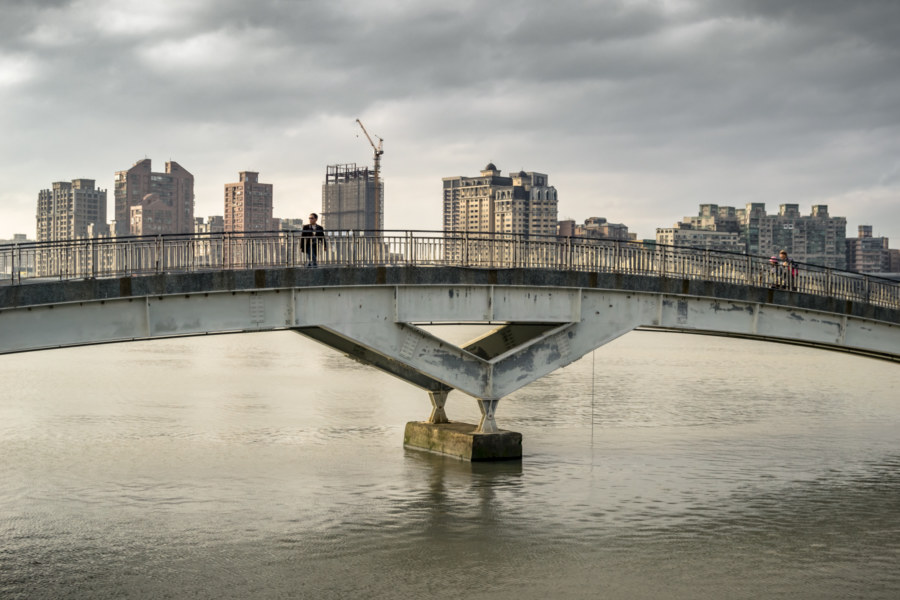
Exploring the urban condition: the buildings that tower over all, the rhythm of the streets, and the fleeting moments of humanity in the midst of the concrete jungle. See also: urbex.
Subterms
Adjacent Terms
Postcards From Zhushan 竹山明信片
Zhushan (literally “Bamboo Mountain”) is a historic yet obscure township in southwestern Nantou mainly known for cultivating tea and bamboo. The town itself is one of the oldest in central Taiwan but it hardly feels that way. Many of Zhushan’s most historic structures were destroyed or damaged beyond repair in the devastating 921 Earthquake that struck in 1999, which is why its “old street” is lined with modern buildings. Most travellers pass through Zhushan on the way to attractions deeper into the rugged interior of Taiwan without sparing it a second glance—but I stopped for a closer look in the summer of 2017 while on an impromptu road trip. After staying the night in a sleazy love motel never meant for sleep (there was no way to switch off the lights) I wandered around in the morning haze, capturing traces of Zhushan’s history as it disappears into memory.
Huadong Valley Ride 2018: Hualien City
In May 2018 I embarked on a multi-day bicycle trip along the majestic Huādōng Valley (花東縱谷) of Taiwan from Hualien City to Taitung City. Although I had previously cycled parts of this valley during my full tour of the island in 2013 I did so without really knowing what was there—and after five years I amassed quite a collection of notes about places I was interested in seeing up close. Several themes emerged while preparing for this trip: old standalone movie theaters, of which I had located more than a dozen; derelict railway infrastructure including stations, military checkpoints, and abandoned lines; and relics of the Japanese colonial era, particularly former Shinto shrines. This post documents my first day of riding, which only began in the late afternoon after arriving by rail at Hualien Station. I had shipped my bike ahead so all I had to do was pick it up from the baggage room, throw the panniers on, and start riding.
Guanshan Zhonghua Theater 中華大戲院
Zhōnghuá Theater (中華大戲院) is an impressive KMT authoritarian era ruin in Guanshan, a small town of approximately 8,800 in the idyllic Huadong Valley of Taiwan. With seating for 1,200 patrons it was the largest theater in Taitung when it opened in 1965, and it soon earned the title “northern tyrant” (běibàtiān 北霸天) for dominating the cinema industry at this end of the county. What explains the existence of such a huge theater in this remote, sparsely populated place? As with the more modest and folksy Wǔzhōu Theater (五洲戲院) in neighbouring Chishang, a closer examination of regional socioeconomic history provides answers.
Taiwan Motor Transport Maintenance Depot 台灣汽車客運公司機料廠
Shulin is a heavily industrialized district of approximately 185,000 residents on the southwestern periphery of Taipei. Until recently it was home to one of the most well-known large-scale ruins in the metropolitan area: the former Taiwan Motor Transport Maintenance Depot (台灣汽車客運公司機料廠), more generally known as the Shulin Factory. This abandonment was far from secret—it was regularly used for photo and video production, airsoft and paintball games, flying drones, practicing graffiti and street art, and the occasional underground techno party. It was so popular, in fact, that it attracted several con artists who impersonated security guards and the property owner to charge a fee for usage of the site, occasionally extorting large sums from more professional operations, which eventually led to their arrest. As for the history of the site itself, Tobias at Only Forward has published an extremely thorough account of this ruin, and I don’t have very much to add apart from my own original photos from two separate visits to the now-vanished site.
Stanton Club 飛宏象山國際聯誼中心
The Stanton Club (飛宏象山國際會議聯誼中心) was an exclusive business and recreation facility located in the foothills of the Nangang Mountains in Xinyi, Taipei. Although details are scant, it was in operation from the late 1990s until approximately 2005, when it went out of business for reasons unknown. Most of the club is underground—and with floorspace or around 3,500 ping, a Taiwanese unit of measurement corresponding to approximately 12,000m2, it was a rather large place. Perhaps owing to its relatively accessible location this became one of the most notorious ruins in Taipei for awhile, even appearing on television at times. The space was finally leased and renovated in 2018 so I am now at liberty to share some photos from several forays made to the site in previous years.
Linkou Shengtai Brick Kiln 林口勝泰磚窯
Linkou, now the fastest-growing suburban district in the greater Taipei area, was once home to more than 30 brick factories, the highest concentration in northern Taiwan. Shèngtài Brick Kiln (勝泰磚窯), at the far northern extent of the Linkou Plateau, is one of the last remnants of this once-flourishing brick-making industry. Numerous ruins can be found across the sprawling site but the most impressive is a Hoffmann kiln, easily identified by its broken chimney. Hoffmann kiln technology was introduced to Taiwan during the Japanese colonial era but this particular kiln only dates back to the mid-1960s, and it has now been abandoned for many decades.
Yuanlin Credit Union 員林信用合作社
Yuanlin Credit Union 員林信用合作社 was a small town bank from Yuanlin, Taiwan, that went out of business at the turn of the century. It originated with a Japanese colonial era credit union founded in 1914 and based out of a long-vanished red brick building directly across from Yuanlin Station 員林車站, a plot of land now occupied by the doomed Golden Empire Building 黃金帝國大樓. In the post-war chaos the original credit union was renamed and reorganized several times, eventually giving birth to the credit union that constructed this particular branch, possibly in the late 1960s or early 1970s.
Agenna Shipyard 阿根納造船廠
Āgēnnà Shipyard 阿根納造船廠 is among the most popular abandoned places in northern Taiwan. It is located in the historic port city of Keelung across the narrow Bāchǐmén Channel 八尺門海峽 from Hépíng Island 和平島, site of the first Spanish settlement in Taiwan, and just around the corner from the equally photogenic Zhèngbīn Harbour 正濱漁港. The shipyard opened in 1967 but was only in business until the 1980s. After many years of neglect the skeletal ruins of the shipyard aroused renewed interest in 2016 when the current leaseholder attempted to demolish the structure. An immediate public outcry prompted the government to designate the shipyard a heritage property, and the cultural bureau is now formulating plans to develop the area into a tourist attraction of some kind. In the meantime, the crumbling ruins of the former shipyard attract hundreds or even thousands of daily visitors.
Grace Hill 麗庭莊園
Grace Hill (Lìtíng Zhuāngyuán 麗庭莊園) is a former wedding venue situated in an industrial park in Neihu, Taipei. It opened in 2005 under the management of the Zhǎngxìng Wedding Company (長興婚禮事業有限公司), an outfit keen to disrupt the local market with a larger, more extravagant space for weddings and other events. The business struggled at first but became more widely known after it was featured in television series, music videos, and the news. In 2007 the space was leased to Dears Brain (迪詩), a Japanese wedding company hoping to enter the Taiwanese luxury wedding market. The original owners took a step back, ceding control of day-to-day operations to Japanese management, and the business continued to grow over the next several years.
